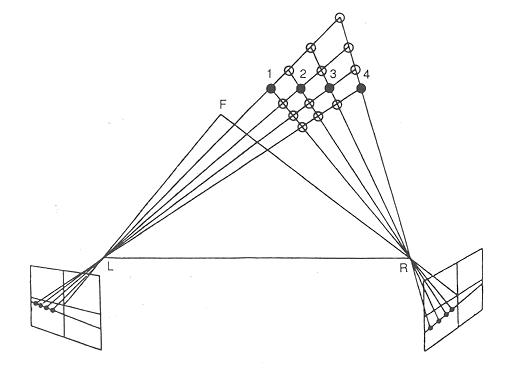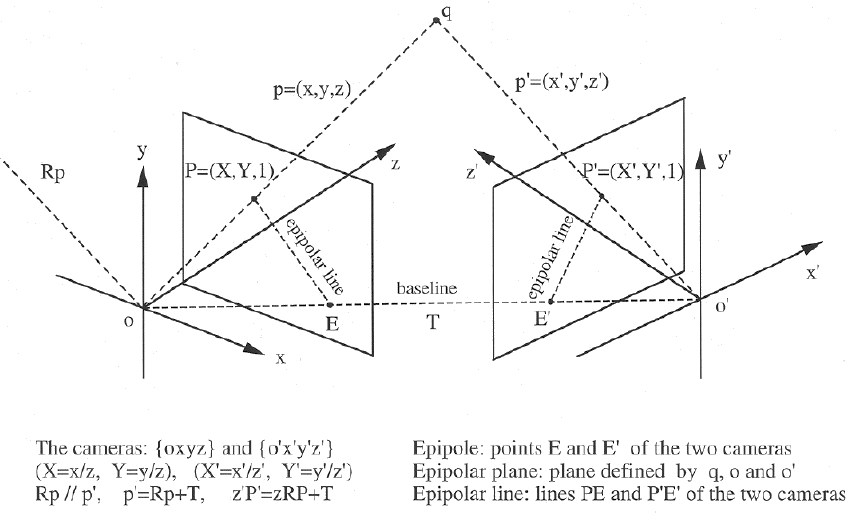
A powerful constraint based on epipolar geometry can be used to drastically reduced the possible matches between two sets of objects (such as dots). As shown in the figure, the optical centers L and R of the two eyes and an arbitrary point in the 3D scene form a plane, which intersects with the two image planes, the retinas, at two epipolar lines. That is, any 3D point in the scene corresponds to a pair of epipolar lines in the left and right eyes.


If we can assume the information of the geometry of the optical system is vailable to the visual processing system, then for any given point in one eye we can find its epipolar line and confine the search of its matching point along the corresponding epipolar line in the other eye.
Additional constraints can be obtained, if we can further assume the opacity and cohesivity of the 3D object.